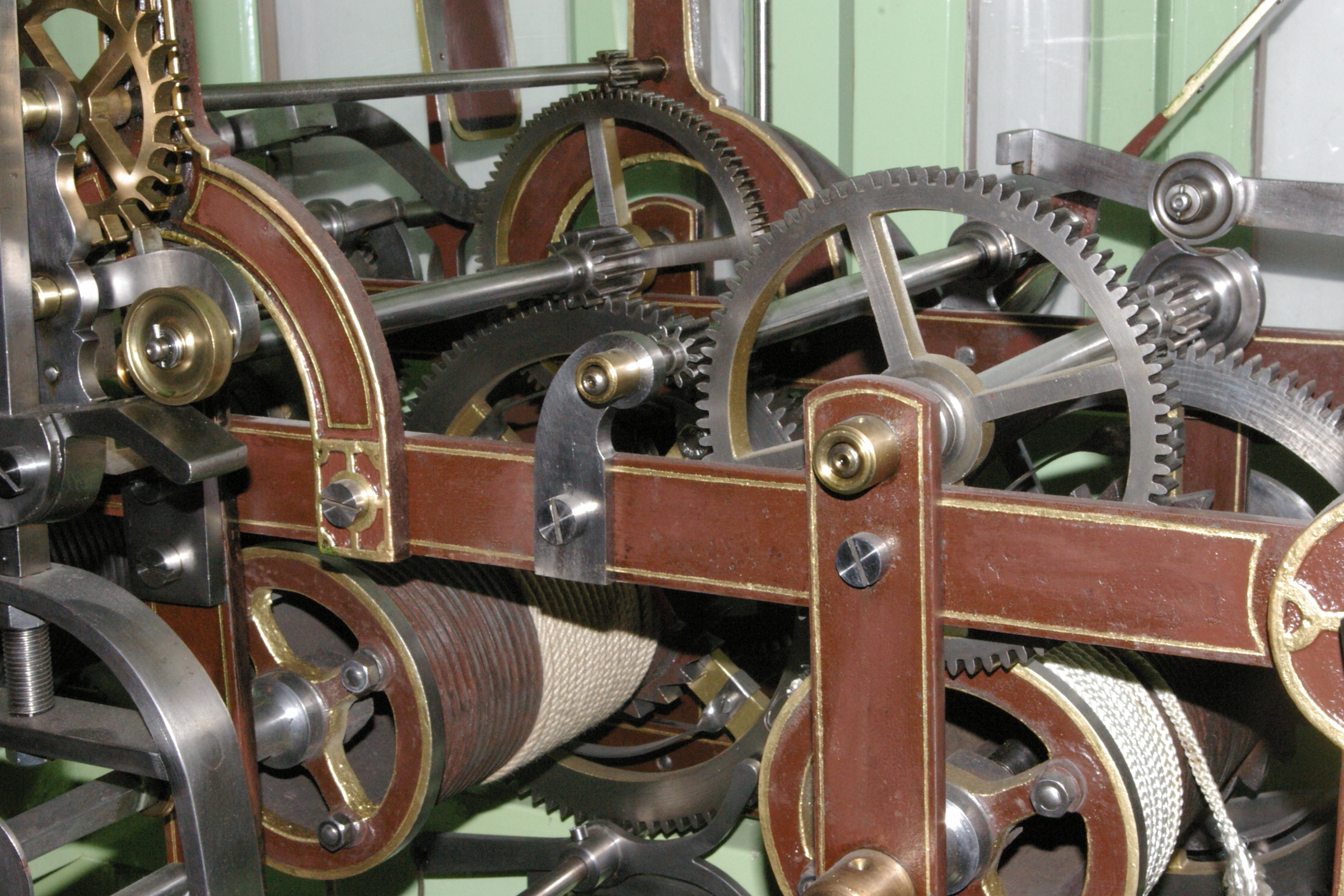The Sleepy Mouse.
Clocks in towers of public buildings in Europe often have very old mechanisms driven by massive pendulums. The famous clock in the Elizabeth tower in London has a pendulum of length 4m (13 feet) weighing 300 kg (660 lb) with a period of 2 seconds. This is the clock that rings the famous bell called "Big Ben".
 |
| Gears of an old German tower clock. Photo by Donald Simanek. |
|---|
 |
| The sleepy mouse. A time traveller. |
|---|
A curious mouse jumps onto the top of the swinging mass of this pendulum. He finds the slow swing pleasantly relaxing, so he curls up and falls asleep. How does his added weight change the period of swing of the pendulum?
- The period is much greater than before.
- The period is slightly greater than before.
- The period is unchanged.
- The period is slightly less than before.
- The period is much less than before.
Feedback is appreciated from readers. Email dsimanek@lhup.edu. If you have a favorite physics puzzle that is not well known, not easily found on the web, or in the many published physics problem books, send it along. Inclulde your answer, too if you have one. If used, we'll credit you. I especially like puzzles that can be solved with insightful and simple arguments, preferably with minimal mathematics.
Answer and discussion.
Every physics student learns that the period of a simple pendulum is independent of its mass. for small swing amplitude. The usual formula assumes a point mass. But the huge hunk of concrete and steel of a tower clock pendulum is not a simple point mass, and the simple formula no longer applies.The pendulum's period decreases slightly when the mouse sits on top of the swinging mass. The sophisticated reason is that while an increase of mass alone doesn't change the period of a pendulum, the placement of the additional mass above the other one raises the pendulum's center of mass, shortening its radius of gyration, and shorttening its period of swing (it swings faster). But this puzzle didn't require knowledge of the definition of radius of gyration, nor any mathematical analysis, knowledge of physical pendulums, nor even the equation for the period of a simple pendulum.
We can use the principle of superposition to get an insightful answer. Shorter pendulums have shorter periods. Think of the pendulum and mouse as two pendulums, the mouse alone would have a shorter radius of motion than the clock pendulum alone. But with the mouse asleep on the pendulum, they must move together, so their common period is a weighted average of the period of the mouse alone and the period of the clock pendulum alone. We don't have to know what sort of average it is to conclude that the period of the combination of mouse and pendulum is shorter than that of the pendulum alone.
These old clocks can drift fast or slow, requiring daily time correction. It is not practical to bring such a massive pendulum to a stop to change anything, so it must be corrected "on the run". This is done by adding or removing small weights to the upper surface of the slowly swinging pendulum weight. In England, old English pennies are still used for this purpose. These are bronze coins (about the size of our U.S. 50 cent coin) with a mass of about 9.45 gram. The famous clock in the Elizabeth tower in London is corrected this way. Adding one penny increases the pendulum frequency, causing the clock to gain 0.4 seconds per day. An adult mouse weighs nearly 20 gram, so it would cause a gain of almost one second per day!
One can think of adding weights on top of the pendulum bob as slightly raising the center of mass of the swinging pendulum, thereby shortening its effective length by a few smidgens (metric smidgens in Europe).
Adjusting the pendulum's period is a distinctly different operation from adjusting the clock time. A friction clutch allows the clock hands to be moved without disturbing the swing of the pendulum.
Return to Physics puzzles.
Return to the Donald Simanek's home page.